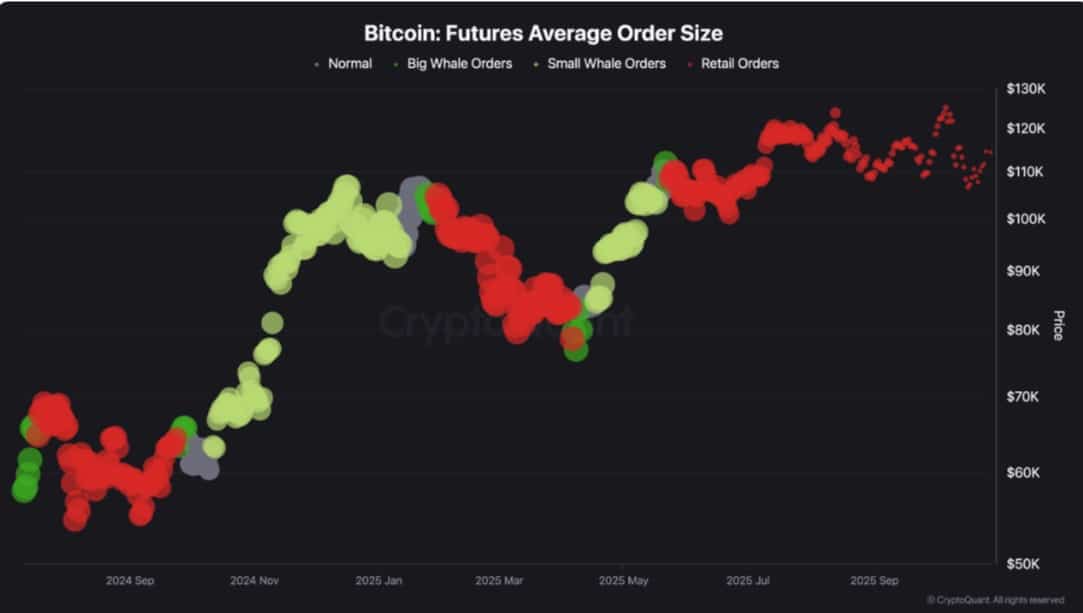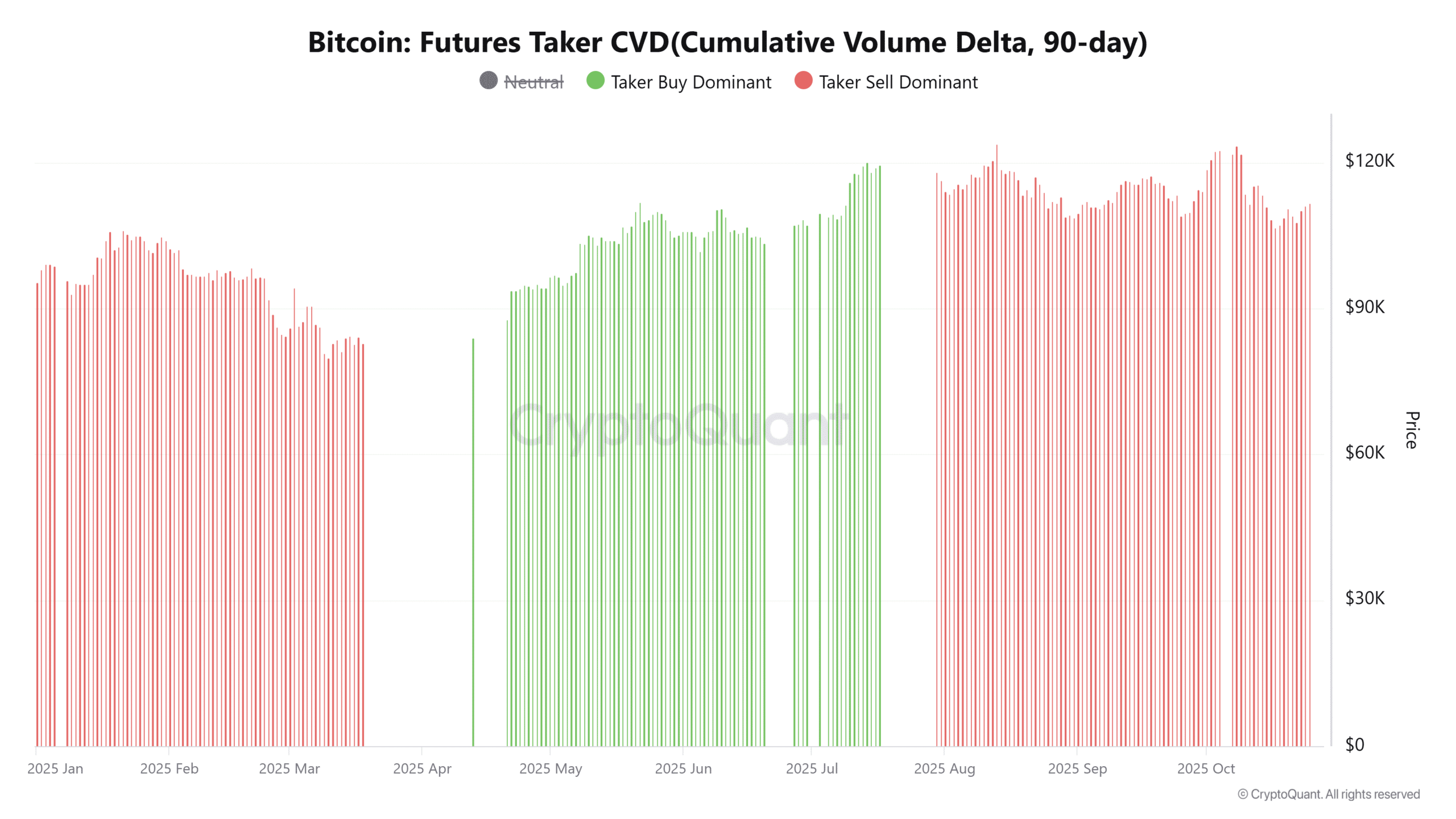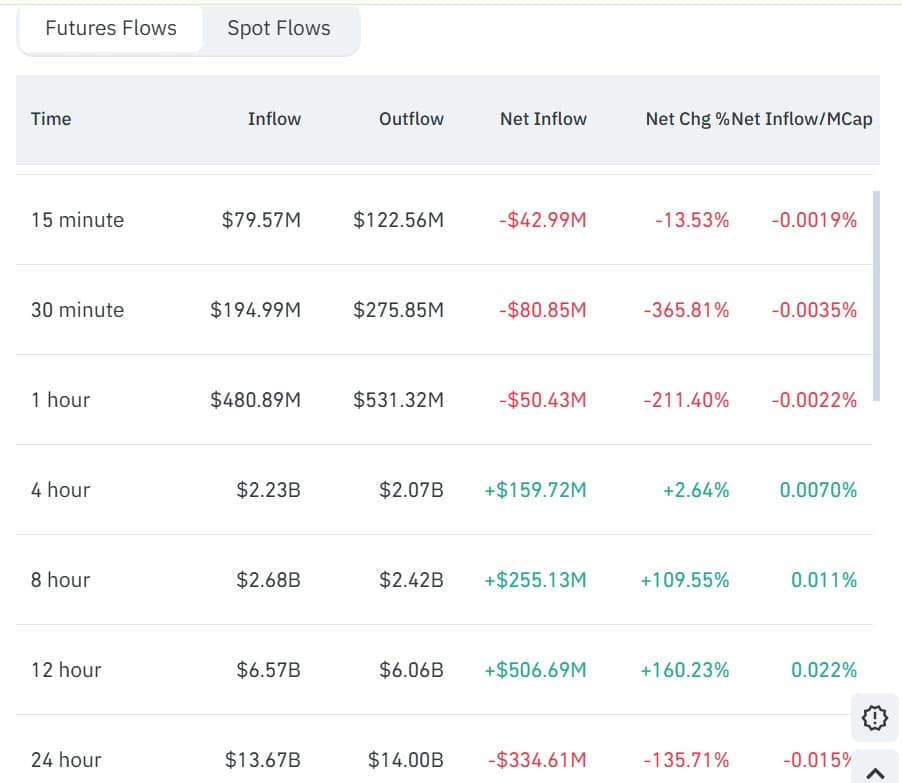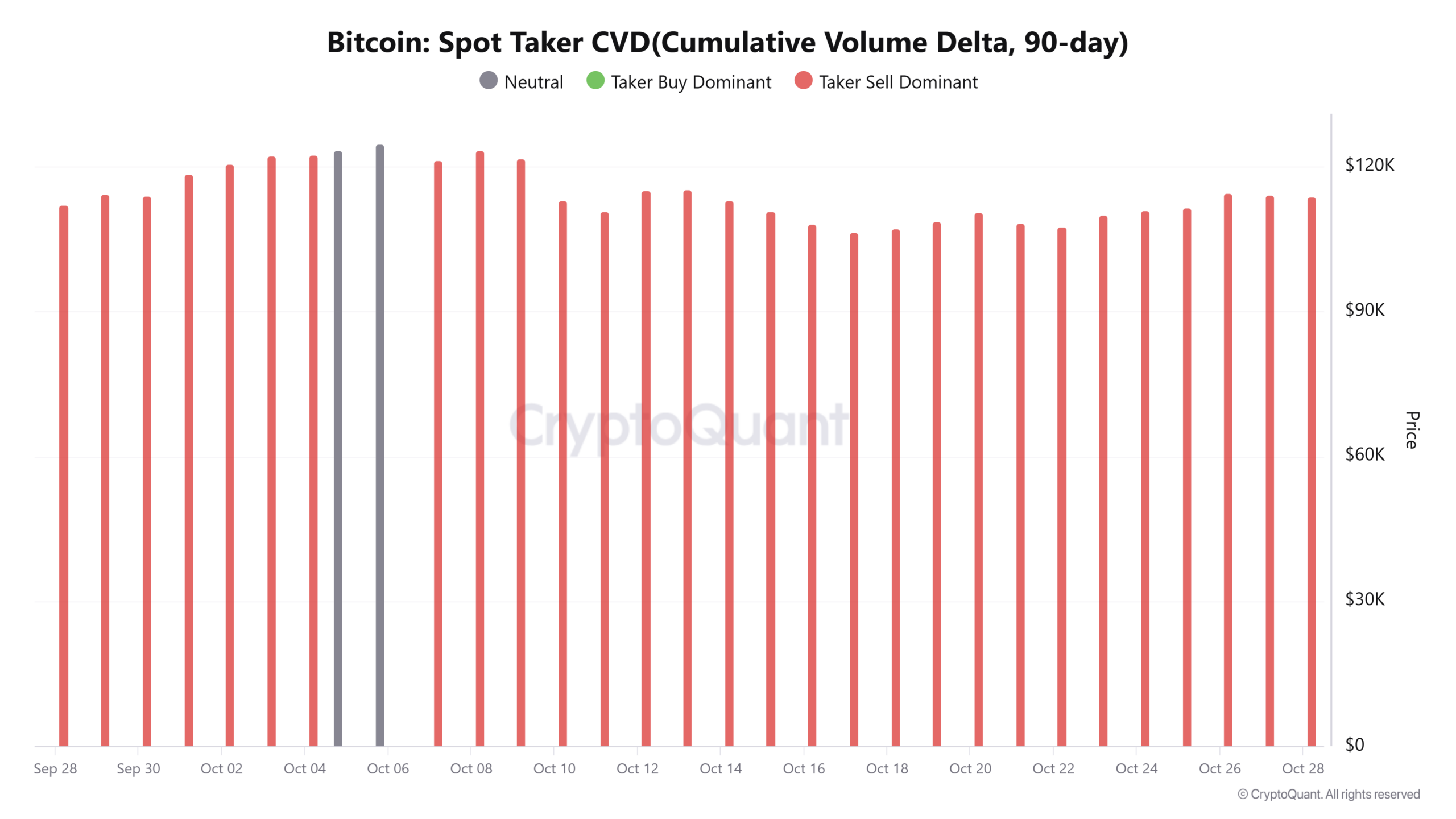Bitcoin retail dominance is rising as smaller order sizes dominate futures trading, with whales stepping back after the recent rebound from $108k–$109k. Data from CryptoQuant shows red Futures Taker CVD, indicating retail sellers leading the market amid low institutional activity.
-
Declining average order sizes signal increased retail participation in Bitcoin futures.
-
Red CVD metrics highlight seller dominance driven by smaller traders.
-
Exchange inflows reached $42 million, pointing to potential selling pressure from retail investors, per CoinGlass data.
Discover Bitcoin retail dominance surging with whales sidelined. Explore futures and spot trends, order sizes, and CVD impacts for informed trading decisions in 2025.
What is Bitcoin Retail Dominance?
Bitcoin retail dominance refers to a market phase where individual investors with smaller positions drive trading volume, overshadowing large institutional or whale activities. In the recent rebound to $116,400 before pulling back to $114,472, data from CryptoQuant revealed declining average order sizes in futures, pointing to retail traders taking the lead. This shift often occurs during consolidation periods, where professionals wait for clearer signals before re-entering.
How Does Retail Dominance Affect Bitcoin’s Price Movements?
Retail dominance in Bitcoin trading typically leads to heightened volatility in the short term but can stabilize prices within a range as larger players remain cautious. According to CryptoQuant analytics, the absence of green clusters in futures order size metrics confirms full retail control, aligning with historical patterns of mid-range consolidation. For instance, over the past 90 days, similar phases have seen Bitcoin trade sideways, with retail sellers contributing to red Cumulative Volume Delta (CVD) readings, as evidenced by seven consecutive days of negative spot taker CVD.
Smaller order sizes and red Futures Taker CVD confirmed that retail traders were driving market activity. This behavior is common during recovery phases, where whales reduce participation to avoid overexposure.

Source: CryptoQuant
This market behavior is common during mid-range consolidation or the later phases of local recovery. Historically, periods of retail dominance have mostly coincided with short-term distribution, as whales wait to reaccumulate at lower levels. In fact, retail investors leading the Futures market were mostly sellers. The Futures Taker CVD remained red, confirming seller dominance and aligning with smaller order activity.

Source: CryptoQuant
This has coincided with the period of increased retail-driven orders in the Futures market. Futures Netflow further evidences this market trend. As per CoinGlass data, Futures Netflow dropped 135%, to -$334.6 million at press time, with outflow hiking to $14 billion. A negative Netflow suggested most investors in the Futures were actively closing positions, a clear bearish sign.

Source: CoinGlass
Frequently Asked Questions
Why Are Retail Traders Dominating Bitcoin Futures in 2025?
Retail traders are dominating Bitcoin futures due to declining whale participation following the recovery from the $108k–$109k zone, as shown by CryptoQuant’s order size metrics. Smaller orders have surged, with red CVD indicating seller-led activity, leading to a 135% drop in netflow to -$334.6 million per CoinGlass, reflecting position closures amid consolidation.
What Happens to Bitcoin Price During Periods of High Retail Dominance?
During high retail dominance, Bitcoin prices often remain range-bound, as seen in current levels between $111k and $115k, with increased volatility from smaller trades but limited directional moves. This phase allows whales to observe before accumulating, potentially leading to breakouts if institutional inflows resume, pushing toward resistance like $119,717.
Key Takeaways
- Retail Traders Lead Bitcoin Market Activity: Smaller order sizes and persistent red CVD in futures and spot markets indicate retail sellers driving recent trading, sidelining whales during consolidation.
- Exchange Inflows Signal Selling Pressure: Positive exchange netflow of $42 million over recent days, combined with futures outflows of $14 billion, suggests retail investors depositing for potential sales.
- Range-Bound Trading Ahead: With low whale involvement, Bitcoin may consolidate between $111k–$115k until institutional re-entry triggers the next upward move.
Conclusion
In summary, Bitcoin retail dominance has taken hold in both futures and spot markets, marked by smaller orders, negative CVD, and significant outflows as detailed by CryptoQuant and CoinGlass data. This shift underscores a cautious phase where retail activity sustains short-term pressure, but renewed whale participation could propel prices higher. Stay vigilant for institutional signals, and consider monitoring key support levels to navigate the evolving Bitcoin market landscape effectively in 2025.
Bitcoin retail traders take control
Bitcoin [BTC] extended its rebound, reaching a two-week high of $116,400 before retracing to $114,472 at press time. Despite the rally, data suggested that institutional investors and whales stepped back from active trading.
According to CryptoQuant, after BTC recovered from the $108k–$109k demand zone, Futures Average Order Size showed a decline in whale participation.
The market instead saw an increase in smaller, retail-driven orders. Usually, when this metric shows red with no green clusters, it indicates a total dominance in retail activity.
Spot mirrors the same trend
The Spot Taker CVD chart also stayed red for seven consecutive days, highlighting persistent selling pressure from retail traders.

Source: CryptoQuant
At the same time, Exchange Netflow was positive for four of the last six days, with inflows around $42 million, signaling increased deposits to exchanges—usually a precursor to selling activity.

Source: CoinGlass
What’s next for BTC?
Analysis indicates that retail traders now dominate both Futures and Spot markets. Whales have largely withdrawn, waiting to buy at lower levels.
When retail activity peaks, BTC often trades sideways within a defined range as professionals remain cautious.
If this retail-driven volatility continues, BTC could stay between $111k–$115k. A breakout within that band, driven by renewed large-order flows, would indicate institutional accumulation.
Like previous whale-led rallies, fresh institutional entry could lift BTC toward $119,717, the next key resistance.
Key Takeaways
Why is retail dominance rising in Bitcoin?
Smaller order sizes and red Futures Taker CVD confirmed that retail traders were driving market activity.
How could this affect BTC’s next move?
With whale activity low and inflows up, Bitcoin may stay range-bound between $111k–$115k.
